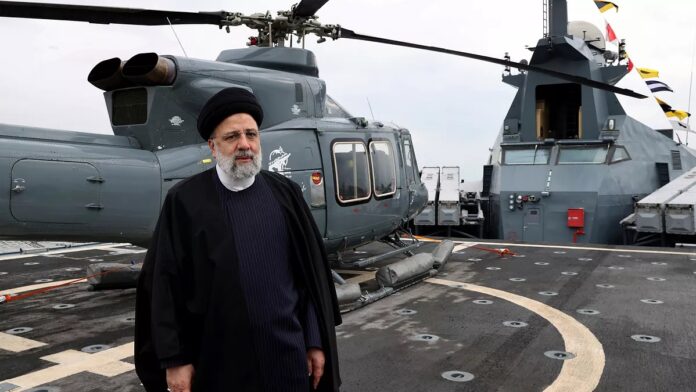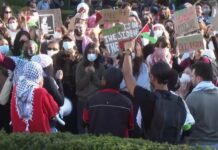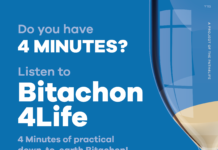
On Friday the Islamic Republic of Iran will hold a special election to choose a new president following the helicopter crash last month that killed the incumbent, Ebrahim Raisi, and several other top officials.
Four approved candidates remain in the race, and of those, three are likely to break through: Masoud Pezeshkian, a former health minister who is attempting to rekindle the hope of millions of Iranians that the system is capable of reform; Saeed Jalili, an ultra hard-liner who was the country’s lead nuclear negotiator more than a decade ago and who remains committed to the same principles of resistance to external pressure and influence; And Mohammad Baqher Qalibaf, the current speaker of parliament, a former mayor of Tehran, who is known for being a pragmatic technocrat hungry for power and implicated in corruption scandals.
Elections under a regime like the one entrenched in Tehran are neither free nor fair. But make no mistake, this vote matters. At a time of deep internal and regional turmoil, this election will have an impact on the long-term viability of the Islamic republic. The clerical system today faces widespread and growing discontent among the people, due in no small part to the poor economy. It further fans the flames with its violent and repressive responses to anyone who defies it.
If a majority of Iranians skip the ballot, proponents of the state’s most insular and retrograde tendencies will continue their reign unabated. But they would be doing it without even the veneer of popular legitimacy. If, however, people show up in large numbers, the story gets more complicated.
Despite being tightly choreographed, presidential elections have historically been the lone opportunity Iranians have had to put their fingers on the scale of decision-making by the regime. As a result, Iranian elections have frequently produced unexpected results.
And when Iranians have participated in presidential elections in large numbers, they have voted for so-called reformist candidates who campaigned on opening the country to foreign investment, on better ties with the rest of the world and the loosening of social restrictions. It’s important to remember that reformists are not trying to upend the Islamic republic. In reforming it, they seek to prolong its life.
In 2013, for example, many observers were convinced that the hard-liner Jalili – the same man on the ballot this time, and the supreme leader’s choice at the time to succeed Mahmoud Ahmadinejad as president – was a shoo-in. But a growing number of people whose standard of living plummeted when U.S. sanctions on Iran’s oil exports took hold in 2012 were not convinced. Although many had pledged to never vote again, when the election neared they threw their support to Hassan Rouhani, a cleric who promised engagement with the West as a means to getting the devastating sanctions lifted off Iran’s economy. His campaign was savvy on social media and many of his proposed cabinet ministers were Western educated. His momentum built quickly.
Rouhani won a surprising but resounding victory, having received a majority of votes in a field of six candidates. Jalili came in third in that election. Qalibaf, the other contender this year, finished second in 2013.
Could history repeat itself for the reformist Pezeshkian?
Much has changed in the decade since, but standards of living are even worse now than they were then. Pezeshkian is promising renewed engagement with the West and loosening of social restrictions. He has notably questioned the wisdom of rigorous enforcement of mandatory hijab for women. How he would achieve these goals is unclear. But former president Mohammad Khatami has endorsed him, and Rouhani’s foreign minister, U.S. educated Mohammad Javad Zarif, is advising his campaign.
Jalili stands for retrenchment in the face of pressure from external forces like the United States. While that may play well with some of the regime’s security elites, ordinary Iranians have repeatedly rejected the sort of isolationist views he espouses. It is difficult to imagine a scenario where he could win a majority of votes in either this three-way race or a runoff. Stalwarts might welcome a Jalili presidency for ideological reasons, but his victory would signal that the Iranian people have checked out.
Qalibaf, despite previously directing crackdowns on protesters as the head of Iran’s police forces, was a popular mayor with a major national profile. He proposes a middle vision: maintain a firm authoritarian grip on the society, but improve people’s quality of life through economic development and negotiate with the West as a necessary evil to achieve those goals.
In all likelihood, therefore, this is a race between Pezeshkian and Qalibaf. The system would most prefer high turnout for legitimacy reasons and a runoff between these two. Ultimately, it can live with either one, as neither is a mortal threat. And paradoxically, if the hard-liner wins, it will show the regime is at its lowest point, perhaps ever.












Well, Giant Zombie might be standing near its biggest nemesis. Go heli!! Toast’em!